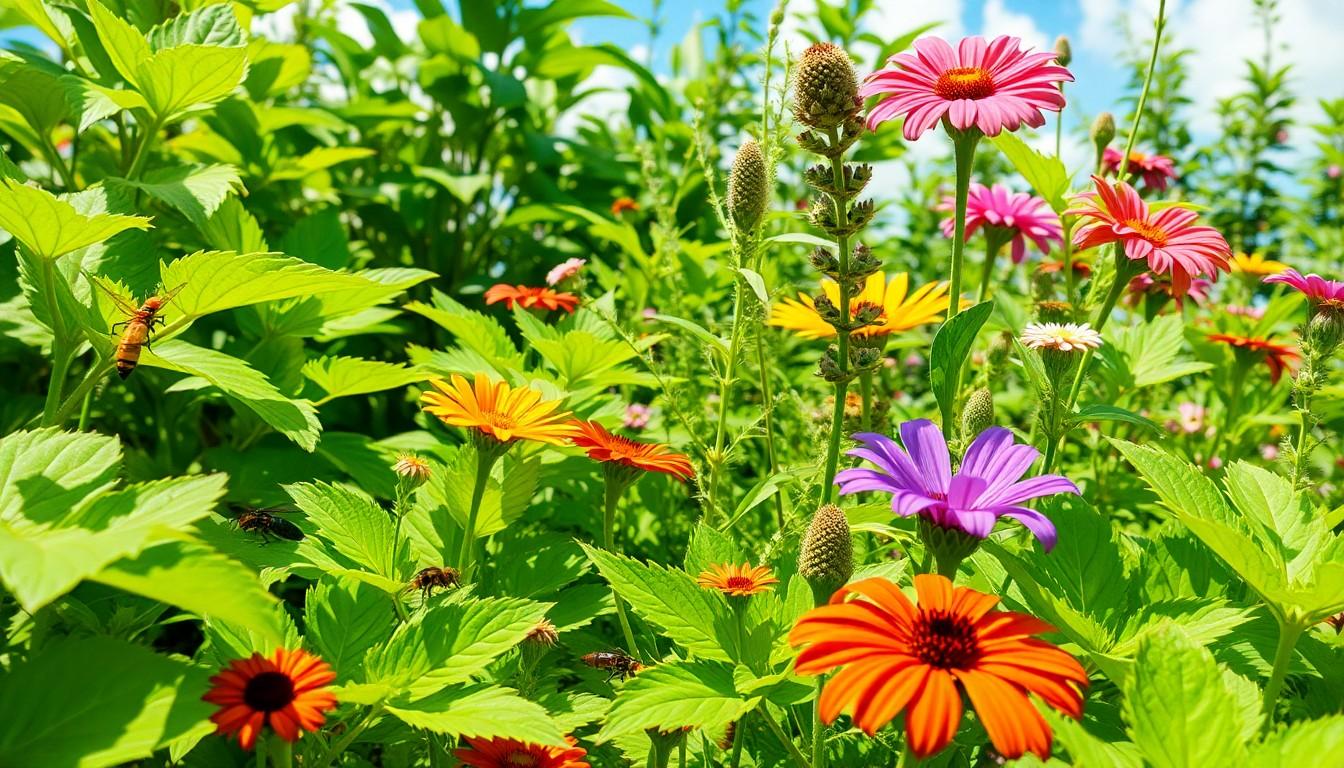Plants might seem like quiet, leafy neighbors, but recent research reveals they’re anything but mute. These green wonders have their own secret language, and it’s time to tune in. From sending distress signals when under attack to sharing nutrients through intricate underground networks, plants are like the ultimate introverts—communicating in ways that would leave even the most seasoned gossipers green with envy.
As scientists dig deeper into the world of plant communication, they uncover fascinating insights that challenge everything we thought we knew about flora. So grab your favorite houseplant and get ready to be amazed. It turns out, they might just be plotting world domination—or at least a more harmonious coexistence. Dive into the latest plant communication news and discover how these silent sentinels are speaking volumes without ever saying a word.
Overview of Plant Communication News
Research continues to reveal fascinating findings about plant communication. Scientists documented that plants emit volatile organic compounds in response to insect attacks. These compounds attract predators of the attacking insects, showcasing an intricate defense mechanism.
Recent studies indicated that mycorrhizal networks, often called the “wood wide web,” facilitate nutrient sharing among plants. Through these underground fungal networks, trees exchange resources, which enhances resilience and community health. These networks also enable the transfer of signals related to environmental changes, further demonstrating coordination among plants.
Another area of exploration involves the role of sound in plant interaction. Evidence suggests that plants can sense vibrations and respond to sound waves. Some studies found that plants exposed to specific frequencies exhibited enhanced growth, hinting at a form of auditory communication.
Furthermore, researchers are studying how plants respond to their neighbors. It appears that plants can detect stress signals from nearby plants and adjust their growth accordingly. This behavior emphasizes the importance of social interaction in fostering a thriving ecosystem.
Botanical communication extends beyond chemical and physical signals. New findings reveal that plants might even engage in a type of visual communication, responding to changes in light conditions and colors. Various species exhibit unique adaptations based on these visual cues.
Recent advances in technology are illuminating these unseen interactions, offering deeper insights into plant behavior and ecology. Continued research holds potential for understanding how these communicative processes can benefit agriculture, conservation, and ecosystem management.
Recent Discoveries in Plant Communication

Recent research highlights the complexity of plant communication mechanisms. Scientists reveal that plants utilize various methods to exchange information, enhancing their survival and growth.
Chemical Signaling
Plants emit volatile organic compounds during insect attacks, functioning as chemical signals to alert neighboring plants. Neighboring flora can respond by ramping up their own defenses to minimize damage. Certain studies indicate a specific blend of these compounds attracts natural predators of the pests. Furthermore, plants engage in nutrient sharing through root exudates, which enhance soil health and support overall plant community resilience. Observing these chemical interactions sheds light on an intricate web of relationships among plant species.
Electrical Signals
Beyond chemical signaling, plants generate electrical signals to communicate stress. These electrical impulses travel through plant cells, acting like an alert system when facing drought or physical damage. Research shows that plants can sense and react to disturbances in their environment quickly, adjusting their growth patterns as needed. Notably, studies reveal that these electrical signals can transmit information at impressive speeds, demonstrating a form of interconnectedness similar to neural networks in animals. Understanding these electrical interactions provides valuable insights into plant behavior and adaptation.
The Impact of Environmental Factors
Environmental factors significantly influence plant communication. Variations in urban settings or climate conditions affect how plants interact with one another.
Urbanization and Pollution
Urbanization alters ecosystems, leading to changes in local flora. Plants encounter stress from pollution, which impacts their ability to communicate. Studies reveal that increased carbon dioxide levels disrupt chemical signaling. Consequently, polluted environments hinder healthy interactions among plant species. Plants in urban areas struggle to protect themselves from pests and diseases since their defenses are compromised. Additionally, noise pollution can interfere with plant vibrational responses, further complicating growth patterns. Urban ecosystems thus present unique challenges that reshape the sophisticated communication networks among plants.
Climate Change
Climate change presents a different set of challenges for plant communication. Alters in temperature and precipitation patterns directly affect plant responses. Many species experience shifts in flowering times due to changing climatic conditions. Research indicates that heat stress can reduce the effectiveness of chemical signals released during pest attacks. As environments become more extreme, plants may have less capacity to warn their neighbors of threats. Variability in moisture levels also complicates nutrient sharing and communication through roots. Overall, climate change disrupts these intricate interactions, revealing a delicate balance that plants strive to maintain.
Implications for Agriculture and Ecosystems
Plant communication reveals crucial implications for both agriculture and ecosystems. Understanding these interactions enhances productivity, sustainability, and environmental resilience.
Sustainable Farming Practices
Farmers can implement sustainable practices by harnessing plant communication. Utilizing mycorrhizal networks enables better nutrient sharing among crops, improving yield. Additionally, encouraging biodiversity helps establish more robust ecosystems that support pest control. Integrating companion planting allows beneficial plants to communicate defenses, minimizing the need for chemical pesticides. Technology also aids in monitoring plant signals, allowing farmers to respond proactively to environmental stresses. These practices lead to healthier soil and crops, ensuring food security.
Biodiversity and Conservation
Biodiversity plays a vital role in plant communication. Diverse plant communities enhance resilience against pests and diseases. Each species contributes unique signals, fostering healthy interactions that promote ecosystem stability. Protecting these interactions through conservation efforts ensures the preservation of natural plant communication networks. Restoration projects focusing on native species help revive these essential connections. Maintaining biodiversity also supports wildlife, creating balanced habitats. As ecosystems thrive, they deliver critical services like clean air, water, and soil fertility.
Future Directions in Research
Research in plant communication continues to evolve, focusing on the mechanisms plants use to connect and interact. Increased emphasis on understanding the role of mycorrhizal networks is vital, as these connections may influence nutrient distribution and stress signaling. Investigations into sound recognition among plants are gaining traction, exploring how vibrations impact growth and environmental responses.
Technological advancements are improving methodologies for studying plant signals. Non-invasive imaging techniques could reveal hidden interactions, capturing real-time responses to environmental changes. Scientists aim to further explore volatile organic compounds to assess their impact on pest dynamics, enhancing pest management strategies in agricultural settings.
Biodiversity stands as a key focus in future studies. Diverse plant species may foster stronger communication networks, influencing ecosystem stability and resilience. Research could identify specific plant combinations that maximize this synergy. Scientists will need to gauge how urbanization and climate change interfere with these interactions, aiming to determine strategies to support plant communication in altered environments.
Experimental trials could lead to innovative agricultural practices that leverage plant signaling. Identifying beneficial plant pairings may reduce reliance on synthetic pesticides, promoting sustainable farming. Understanding plant communication lays the groundwork for improving crop resilience and overall productivity.
Collaboration among researchers from various disciplines could yield insights into plant communication processes. Integrating knowledge from ecology, biology, and technology may accelerate findings in this field. Future investigations will likely illuminate the importance of maintaining diverse ecosystems to ensure efficient plant interactions, safeguarding agricultural systems and natural habitats alike.
Conclusion
The fascinating realm of plant communication reveals a complex network of interactions that significantly impacts ecosystems. As research continues to uncover these hidden connections, the importance of biodiversity and sustainable practices becomes increasingly clear. Protecting and restoring these communication channels not only enhances plant resilience but also supports agricultural productivity and environmental health.
Future studies will likely deepen understanding of how plants interact with each other and their surroundings. Emphasizing collaboration across disciplines can lead to innovative approaches that promote healthier ecosystems. By appreciating the intricate language of plants, society can work toward a more harmonious coexistence with nature, ensuring a sustainable future for generations to come.

